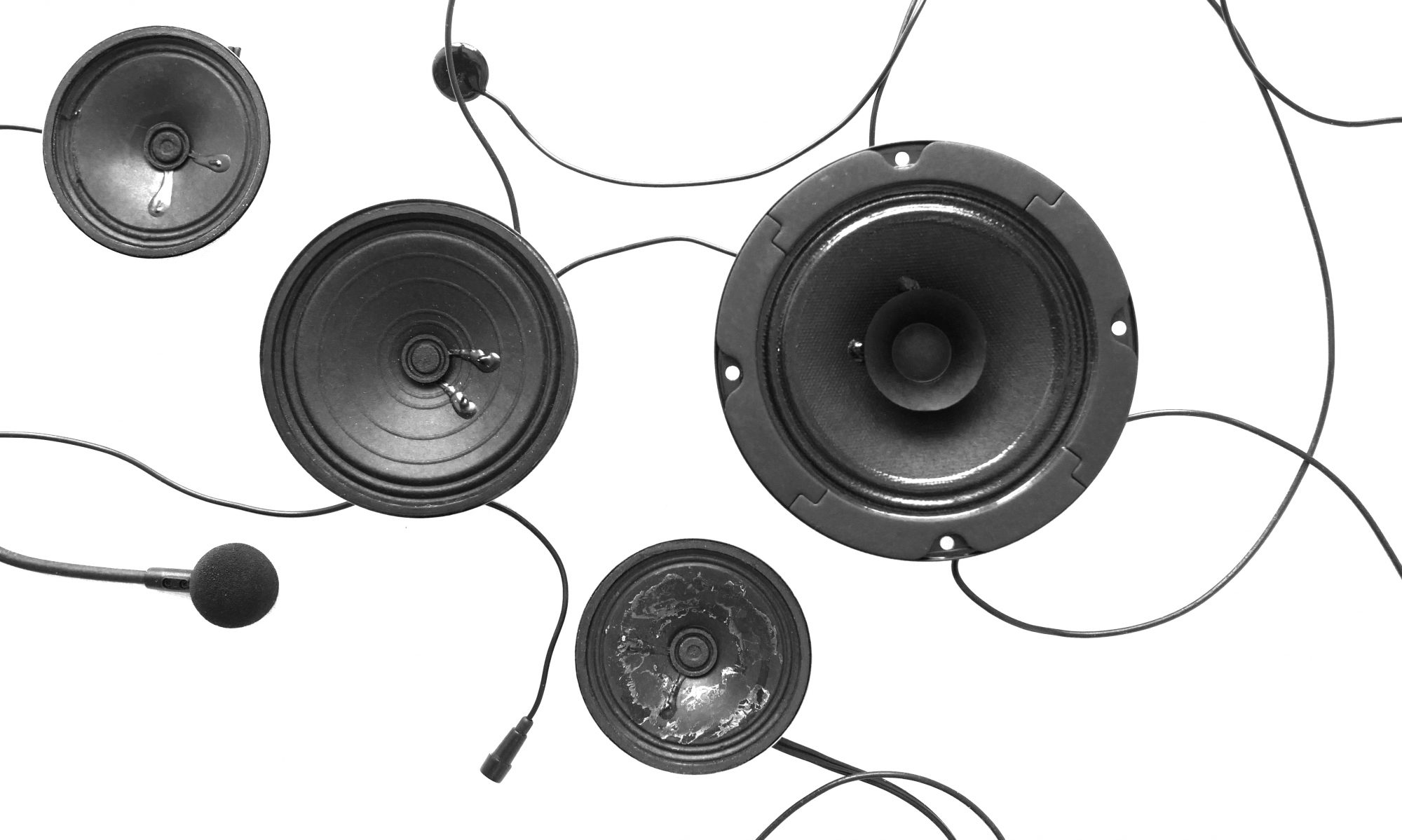
By wearing a costume we change what we look like. It is less common to change not only our visual appearance but our sonic appearance as well. The sounds our bodies make in everyday life are mostly quite soft. Footsteps, breathing, the sound of clothes moving. By wearing red sandpaper costumes Özgür Erkök Moroder and Steffi Weismann developed a performance in which they transform radically. Their performance series Touch Amplifier (2018) explores the possibilities of reinventing touch by exchanging our soft and smooth skin with rough sandpaper.

Their collaboration on this project started when Steffi Weismann saw Özgür Erkök Moroder’s video Sanding Hug (2017) at his solo show Controlled Fantasy at Apartment Project. In this video Daniel Hinojo and Özgür Erkök Moroder are performing in sandpaper costumes, which Özgür started to develop in 2014. In the video these two suits are used without any amplification. The video did not only affect Steffi strongly but it reminded her also of costumes she had developed herself a long time ago, when she studied with Martin Rupprecht. One of them had been a kind of suit of armour made out of sandpaper. Steffi asked Özgür if he was interested in developing his work into a sound performance using contact microphones for amplification. He had been interesting in amplifying the suits and as he told me “Since we were on the same page, imagining similar things when looking to these suits, we just needed to start rehearsal dates.”
For the live performance the costumes had to be redesigned a bit and stronger sandpaper was needed. A friend brought them a 7 kilo role of industrial sandpaper from Istanbul. This paper is very rough and can actually cause skin injury if you do not handle it very carefully. As you can see on the picture below, it is also quite some work to cut it into the right formats. The fingerless hands of the two characters have been made of a finer type of sandpaper, resulting in a different sound.

For picking up the vibrations of the sandpaper they use four contact microphones for each costume. Steffi attached piezo disks with gaffer tape to the smooth side of the sandpaper. During developing the outfits and rehearsing with them they remarked that only four parts have to be amplified to obtain a good audible result: the head, the chest, the right hand and the left thigh. The microphones are amplified through four channels, two for each performer. Head and hand are going through one loudspeaker, chest and thigh through the other. Some equalising is done on the sound, giving the chest and thigh channel a bit more bass. The four loudspeakers are positioned in the hall according to audience position and acoustical qualities of the space (as you see below in the three documentation videos this was quite different for each performance).

The sandpaper costumes make sound with every movement you make, also unamplified at the beginning of the performance, as you can see in the documentation video below. They reconsider the sounds our touch makes in every day life. A very impressive moments in all performances is when an assistant comes on stage and plug in the two creatures (this happens at 1’48” in the video below, and the reverse when they are unplugged at 10’25”). Both characters have been on stage for a while and the audience has been able to discover their visual and sonic features, modified by their sandpaper costume. A plug is placed in their back, connecting the contact microphones of the costume to the loudspeakers, and amplifying specific movements they make. By adding the contact microphone amplification there is a strong change in sound quality. The resonances of the contact microphones are added, and the sound is spatialised through the four speakers. This is enhanced by adding a voice processor (TC Helicon Vocal Processor) on the hand and head microphone of Özgür, which you hear for example in the first video at 8’55”. The two touch amplifiers become a new kind of species.
As you can see in the two videos below of other Touch Amplifier performances, these two are quite different from the performance above. Inspired by the Biomechanics system of actor training developed by Vsevolod Meyerhold they continued to develop the performance. As Özgür mentioned: “The question was how do we compose our body image and body language with the sounds that this image creates – in an ordinary way. Ordinary because our body conditions and image is already pretty extraordinary. Ordinariness may lead to a stronger alienation experience and also humor in our case.” They started to look for non-cognitive actions, looking for focus on the functions of our body. Dancing and sport were good examples of these kinds of actions. They included some techno beats, creating an image of dancing robots in a dark club. They also extended the exercise part, and added jumping on a trampoline. Steffi was jumping on the wooden stage and the jumps on different surfaces created a rhythm.
In all three performances the characters develop a new visual and acoustic body language. This body language refers to a sound we might know, since sandpaper is a material many of us have experienced or worked with in our everyday life. Due to the using this sandpaper as a kind of skin replacement these performances reveal new perspectives of what our touch and movements could indicate.
Many thanks to Steffi and Özgür for answering all my questions!
If you are interested in other works for wearable microphones and loudspeakers, continue reading here.
